|
FOCUS / FORUM
INDEX
|
 |
In 2008, the Forum Comment,
was relaunched as the Focus
reflecting the closer comment from
NEMP and the panel of educators. |
 |
|
Main Index for Focus / Forum
Introduction
to Focus / Forum
He
Whakaputanga Whakaaro –
Introduction for Mäori
Medium forums
|
| Forums by year of assessment |
|
|
|
Science
Art
Graphs, Tables & Maps
|
|
|
|
Music
Aspects of Technology
Reading & Speaking |
|
|
|
Information
Skills
Social Studies
Mathematics |
|
 |
|
Listening
& Viewing
Health & Phys. Ed.
Writing |
|
| Forums for Mäori Medium |
|
|
|
Science
Art
Graphs, Tables & Maps
|
|
|
|
Music
Aspects of Technology
Reading & Speaking |
|
|
|
Information
Skills
Social Studies
Mathematics |
|
 |
|
Listening
& Viewing
Health & Phys. Ed.
Writing |
|
|
|
|
|
 |
|
|
|
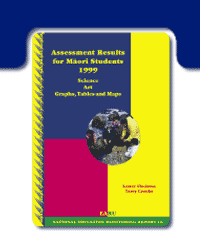
CLICK
on cover above for full 1999 report
|
|
|
I te tau 1999, i te wä tonu e mahia ana te kaupapa tätari
i te mätauranga i ngä kura katoa, ka mahia e NEMP
tëtahi kaupapa ä-motu e tätari ana i ngä äkonga
tau 8 e akongia ana i te reo Mäori. Ko ngä putanga
o aua tätaritanga o ngä äkonga Mäori tau
8 e akongia ana i te reo Mäori, rätou ko ngä äkonga
Mäori tau 8 e akongia ana ki ngä kura rïroa,
kei te takoto i roto i pürongo a NEMP, Assessment
Results for Mäori Students 1999 –
Science; Art; Graphs, Tables and Maps.
 |
In
conjunction with the 1999 assessment programme in
general education, NEMP assessed a national sample
of year 8 students in Mäori immersion education.
The results for year 8 Mäori students in immersion
education along with results for year 8 Mäori
students in general education are given in the NEMP
report, Assessment Results for Mäori Students
1999 –
Science; Art; Graphs, Tables and Maps. |
IMPORTANT NOTE RE TRANSLATION: Translations for each 'He
Whakaputanga Whakaaro' and report are historic,
reflecting the translation as at the time of printing.
Variations in translation in the body text may
therefore occur from one year to the next. Headings
however, have been standardised and reflect current
translations if they appear consistently through
each 'He Whakaputanga Whakaaro'.
|
| HEI
WHAKATAKI 1999 |
 |
INTRODUCTION
1999 |
Koianei
ia te wä tuatahi kua uru mai ngä äkonga
o ngä
whakaakoranga reo Mäori ki ngä mahi a NEMP, mai
i töna tïmatanga i te tau 1995. Koianei anö hoki
te wä tuatahi kua whakahaerehia ëtahi kaupapa tätari
mätauranga i roto katoa i te reo Mäori.
He maha ngä tatau kua tuwhera ki a NEMP i tënei
kaupapa, arä, i te wähanga whakamahere, i ngä whakamaori,
i te whakamätau i ngä kaiwhakahaere, i te whakahaere
i ngä tümahi, ki te tätari i ngä urupare
a ngä
äkonga, i te aroturuki me te whakapürongo i ngä putanga.
He mea nui kia maumahara tätou, ko te whäinga nui
i roto i te kaupapa aroturuki ä-motu, kia taea ngä tino
körero e whakamöhio ana, he aha ngä mätauranga
kei ngä
tamariki, nö whea aua mätauranga, nö ngä mahi
he mea ako i te kura, nö hea ake ränei. Kei roto
i ngä
putanga, ka kitea te whakaaro nui ki ngä tauira, ki
tä
rätou eke haere i ngä taumata, te whakanui o aua
ekenga taumata, te tohutohu ki ngä wähi o te ratonga
mätauranga hei whakarerekë, me te tuku i ngä rauemi
e tika ana.
I pä mai ëtahi uauatanga ki a NEMP i roto i tënei
tana tau tuatahi ka tätaria e ia ngä äkonga
Mäori rumaki reo. E whai ake nei ko ëtahi o aua
uauatanga arä,
• he
tokomaha ngä äkonga rumaki reo kätahi
anö
nei kua uru atu ki te whakaakoranga rumaki reo, ä,
me te tüpuhi o ö rätou reo Mäori.
• i kitea, he uaua te tahuri i ëtahi o ngä tümahi
me ngä rauemi mai i te reo Ingarihi ki te reo
Mäori (hei tauira atu, ko ëtahi o ngä kupu
Ingarihi hangarau nei, käore he kupu Mäori
e rite ana).
• he roa ake te wä e pau ana ki te whakaoti
i te mahi tätari i roto i te reo Mäori i
te reo Ingarihi. Ko te otinga atu o tënei, i mahue ëtahi
o ngä tümahi, käore ränei i oti,
nä te pau o te wä.
• ngä rerekëtanga i roto i ngä whakahaere
o ia tümahi.
• i kitea i ëtahi wä, käore pea
i te kaha te mahi a ngä äkonga rumaki reo
Mäori i ëtahi o ngä mahi nei. He kore
pea nö rätou e tau ki ngä
tikanga o te kaupapa nei.
Nä ënei
uauatanga, käore i whakakuhuna ëtahi o ngä tümahi
ki roto i ngä tätaritanga whakaotinga, me ngä pürongo
i puta. 17 o ngä tümahi pütaiao 33, e
5 o ngä
tümahi toi e 9, e 5 anö hoki o ngä ripanga,
kauwhata, mahere 27 i tangohia i te pürongo, me ngä whakatauritenga
i waenganui o ngä äkonga Mäori rumaki reo
rätou ko ngä äkonga Mäori mätauranga
rïroa.
Me kaua tätou e pöhëhë ko ngä putanga
o ngä mahi aroturuki i ngä ekenga mätauranga
o ngä
äkonga Mäori rumaki reo i tënei tau ngä tino
körero, käore, he tohu noa iho rätou ki
ngä
nekeneke whänui. Me nui tonu ngä mahi me te whai
märamatanga i mua o te kï, käore he ärikarika
o te tautoko i
ënei aroturuki ä-motu hei mea tohu ki ngä putanga
mätauranga. Häunga tërä, he pai ngä putanga
whänui mö ngä äkonga Mäori rumaki
reo, rätou ko ngä äkonga Mäori mätauranga
rïroa,
ä, e tika ana kia whakanuia tënei.
|
|
This
is the first time that children in Mäori immersion
education have participated in the National Education
Monitoring Project (NEMP) since it began in 1995. This
is the first time that NEMP has conducted assessment
in te reo Mäori .
This new undertaking for NEMP has offered exciting challenges
in the areas of task development and selection, translations
to te reo Maori, administrator training, task administration,
student responses, and the analysis and reporting of results.
It is important to remember that the main goal of national
monitoring is to provide detailed information about what
New Zealand’s children know and can do, regardless
of what may or may not have been formally taught in schools.
The reported results allow recognition of patterns of performance,
celebration of successes, and identification of desirable
changes to the delivery of education and supporting resources.
NEMP
experienced a number of significant difficulties in
its first year of assessment of children in Mäori
immersion education. These included
•
variations in the length of time students had spent
in immersion programmes, with the consequence that
some students had very limited skills in te reo
Mäori .
• challenges in the translation of tasks and
materials from English to Mäori (for example,
many technical terms did not have well established
Mäori equivalents).
• the assessments generally took longer to administer
in Mäori than English. This resulted in many incomplete
or unattempted tasks due to insufficient time.
• variations in the administration of tasks.
• in some instances, an apparent lack of motivation
of Mäori immersion students to engage in specific
tasks. This may have resulted from cultural factors.
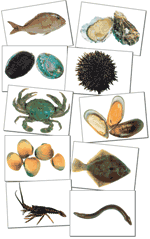 These
difficulties led to the exclusion of some tasks in the
final analyses and reporting. 17 of the 33 science tasks,
5 of the 9 art tasks, and 5 of the 27 graphs, tables
and maps tasks were excluded when making comparisons
between Maori students in immersion education and Mäori
students in general education. These
difficulties led to the exclusion of some tasks in the
final analyses and reporting. 17 of the 33 science tasks,
5 of the 9 art tasks, and 5 of the 27 graphs, tables
and maps tasks were excluded when making comparisons
between Maori students in immersion education and Mäori
students in general education.
The results from this first year of monitoring student
achievement in Mäori immersion education need to be
seen as indicative only. There is much to be done and understood
before national monitoring results for Mäori immersion
education can be viewed with the same confidence as the
results provided for students in general education. Notwithstanding,
the overall results for Mäori students in immersion
and general education are positive, and there is much to
celebrate.
|
| |
|
|
TÄHÜ
KÖRERO
|
|
HISTORY |
Kua
huri haere te ähua o te mätauranga rumaki reo
Mäori i roto i te 15 tau kua pahure, me te mea anö,
kei te huri tonu. Ko ngä
rauemi ä-tangata, ä-rawa hoki a ngä hapori
mätauranga rumaki reo Mäori nei, e ahu mai ana
i roto i aua hapori anö.
He maha, he rerekë hoki ngä kaupapa whakaako rumaki
reo. He rerekë anö hoki te matatau ki te reo o
ngä äkonga rätou ko ngä kaiwhakaako kei
roto i ngä whakaakoranga nei. Kei tëtahi pito,
ko ngä rüma reo rua i roto i ngä kura rïroa, ä,
kei tëtahi anö pito, ko ngä Kura Kaupapa Mäori
e ako ana i te katoa o ngä mahi i roto i te reo Mäori.
I runga i tërä ähuatanga, he tino rerekë te
matatau o tënä, o tënä
äkonga mai i ngä kaupapa reo rua, rumaki, Kura
Kaupapa Mäori hoki.
Me märama anö tätou ki te mea, me huri kë ngä
äkonga rätou ko ngä kaiwhakaako o ngä Kura
Kaupapa Mäori ki te whakaaro me te körero i roto
i ngä reo e rua.
Ko te tikanga, me whai katoa ngä kura Käwanatanga
e whakahaere kaupapa rumaki reo ana, i Te Anga Marautanga
o Aotearoa, me ngä tohutohu o te National Administration
Guidelines. Me te mea anö, ka hikina, ka putaina
e ngä kaupapa mätauranga rumaki reo, te whakaaro
mö te ‘noho Mäori’,
ä, e taea tënei mä te whakanoho i te reo Mäori
hei huarahi atu.
Mö ngä Kura Kaupapa Mäori e whai ana i ngä mätäpono
o Te Aho Matua, me täpiri atu anö ko ä rätou
mahi ki te whao mai i tëtahi marautanga Te Aho Matua,
tae noa ki ngä whakaakoranga e hängai ana ki tö rätou
tünga me tö rätou ähua motuhake.
E tika ana kia whakanuia, kia tautokona ngä ähuatanga,
ngä
mätäpono me te whakatinanatanga o taua marautanga.
I tua atu, ä taihoa nei, ka noho Te Aho Matua ki
tëtahi wähi nui o ngä aroturuki ä-motu
o ngä äkonga Mäori rumaki reo.
Ehara i te mea e kï ana, ko ngä körero i puta
i tënei o ngä huri aroturuki, ngä körero
katoa e pä ana ki ngä mea e möhio nei, e taea
ränei te tutuki e ngä
äkonga Mäori rumaki reo, e ngä Mäori
ränei kei ngä whakaakoranga rïroa. Ä taihoa
nei, ko te tikanga, ka höhonu ake te ruruku a ngä kaupapa
aromatawai a NEMP ki roto i ngä mahi, me kï i te
wä e kökiritia ana
ngä take nui. |
|
Mäori
immersion education has evolved over the last 15 or so
years, and it is still evolving. The human and material
resources at the disposal of Mäori immersion education
communities have largely depended on those communities
being self sufficient.
Mäori immersion programmes are many and varied. Language
fluency levels of staff and students in these programmes
are also diverse. At one end of the continuum there are bilingual
classes within general education schools, and at the other
end there are Kura Kaupapa Mäori where no English is
used during instruction time. Consequently, there are variable
levels of fluency in te reo Mäori amongst students in
bilingual, immersion and Kura Kaupapa Maori programmes.
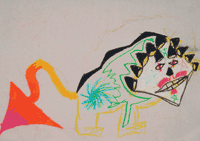 It
is also important to understand that staff and students
within a bilingual classes or Kura Kaupapa Mäori
are required to think and speak in two languages. It
is also important to understand that staff and students
within a bilingual classes or Kura Kaupapa Mäori
are required to think and speak in two languages.
All State schools delivering Mäori immersion programmes
must work within the New Zealand Curriculum Framework and National
Administration Guidelines. At the same time Mäori
immersion education fosters and advances a particular philosophy
which is unique to ‘being Mäori , and this is
achieved substantially through the medium of te reo Mäori.
Kura Kaupapa Mäori that adhere to Te Aho Matua are further
challenged as they attempt to develop an Aho Matua curriculum
and teaching approaches appropriate to their unique and special
characteristics.
This linguistic feature, philosophy and approach to curriculum
will continue to need further recognition and validation,
and will have major implications for future planning of national
monitoring of Mäori Immersion students.
The results generated from this first round of monitoring
do not claim to explore the full extent of what students
in Mäori immersion know and can do, nor what Mäori
in general education can do. Future NEMP assessments should
allow greater clarity and depth, as key issues are addressed. |
| |
|
|
TE
PÜTAIAO
|
|
SCIENCE |
Ngä
Ähuatanga Pai
Tümahi He
oranga ngäkau i te kitenga ake i rite te pai o ngä mahi
a ngä
äkonga Mäori rumaki reo rätou ko ngä äkonga
Mäori kura rïroa i roto i te 12 o ngä tümahi
16. Ko ngä pükenga o te äkonga i whäia
i roto i tënei wähanga ko te räwekeweke, te
whakamätautau, te whakamärama, te rangahau, te
aromatawai me te whakatautika. He maha ngä wähanga
me höhonu tonu te wänanga, ka mutu, i roto i ëtahi
wahanga e toru, i kitea, i pai ake te mahi a ngä äkonga
Mäori kura rïroa i ngä äkonga Mäori
rumaki reo. Ko tëtahi o aua mahi e toru, e pä ana
ki te kume-ä-papa,
ä, ko tëtahi atu e pä ana ki ngä ähuatanga
urutau a te ika. Ka kite tätou i te ururua o te huarahi
ki te whakamäori i ngä ariä höhonu nei.
Ko te tümanako, ka kakea ake anö ngä taumata
e ngä akonga, ina whakatautia ake ana ko tëhea
te huarahi tika i te mahi aroturuki ä-motu, i ngä wä e
hängai ana tana titiro ki ngä kaupapa rumaki reo.
I roto o tëtahi o ngä tümahi nei, i kitea
he pai ake te mahi a ngä äkonga Mäori rumaki
reo, ki ngä äkonga Mäori kura rïroa.
Ko te tümahi nei, e rapu ana i ngä tühono
i roto i te ‘nekeneke’.
Tiro whänui Rite
ana te pai o ngä äkonga Mäori kura rïroa,
rätou ko ngä äkonga Mäori rumaki
reo i roto i ngä tümahi pütaiao nanao-ä-ringa
nei. He tino pai ki ngä äkonga Mäori rumaki
reo te höpara haere, waihoki, ko te mea tino pai
ki ngä äkonga Mäori kura rïroa, ko
ngä tümahi whakahaere whakamätautau nei.
He pai ake ki ngä äkonga Mäori rumaki reo
ki te mahi i ä rätou mahi pütaiao ki te käinga,
i te wä
e pai ana ki a rätou, häunga ngä äkonga
Maori kura rïroa.
Ko te rerekë nui rawa i kitea i roto i te pürongo
i waenganui i ngä äkonga Mäori rumaki reo
ki ngä äkonga Mäori kura rïroa, ko tënei;
he hihiko ake ngä
ngäkau a ngä äkonga Mäori rumaki reo
i ngä
äkonga Mäori kura rïroa, ki ngä take
pütaiao,
ä, e pono ana te rahi o rätou ka taea e rätou
te eke hei tohunga pütaiao.
|
|
Good
news
Tasks It
was heartening to see that Mäori students in
both immersion and general education performed similarly
on 12 of 16 tasks. These 12 tasks required application,
testing, explanation, investigation, evaluation and
justification. Many components involved higher order
thinking, as did 3 components of tasks where Mäori
in general education performed significantly better
than Mäori in immersion. One of these 3 tasks
dealt with gravity, and another with significant
adaptive features of fish. Linguistic challenges
in conveying such concepts cannot be underestimated.
It is not unreasonable to expect better performance
once such challenges for national monitoring are
refined and issues impacting on immersion programmes
are resolved. Students in Mäori in immersion
education performed significantly better than Mäori
in general education on one of the tasks which was
a link task dealing with motion.
Survey Both
Mäori immersion and general education students
favoured hands-on science activities. Students in Mäori
immersion programmes strongly favoured field trips,
while Mäori students in general education favoured
activities with an experimental emphasis.
 Students
in Mäori immersion education were more supportive
of doing science at home and in their own time than
Mäori students in general education. Students
in Mäori immersion education were more supportive
of doing science at home and in their own time than
Mäori students in general education.
The most notable reported difference between Mäori
immersion and general education students was that students
in immersion programmes were far more confident about
themselves in science, and about their ability to be
good scientists. |
| |
|
|
NGÄ
TOI
|
|
ART |
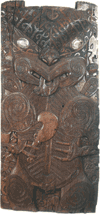 Ngä
Ähuatanga Pai Ngä
Ähuatanga Pai
Tümahi I
roto i ngä tümahi hanga toi, i pai ake ngä
äkonga Mäori rumaki reo i ngä äkonga
Mäori o ngä kura rïroa mö ngä tümahi
piakano, ä, i ähua pai ake i roto i ngä tümahi
peita. I pai ake te mahi a ngä akonga kura rïroa
i roto i te tümahi mätaki-ka-peita, me te tümahi
te-peita-i-te-maha-o-ngä-mea.
Kei reira ëtahi mea e tohu ana, kua ako ngä äkonga
Mäori rumaki reo ki ëtahi pükenga toi Mäori,
uara Mäori. I kitea ënei ähuatanga i ä rätou
mahi i ngä kaupapa e pä ana ki te whakaputa takahanga
whakaaro, me ngä rere ä-hinengaro.
Tiro
whänui I pai ki ngä äkonga Mäori
rumaki reo ngä mahi toi. Ki tä rätou,
he nui ngä mea i ako rätou, me te mea anö,
i möhio rätou ki ö
rätou ake pümanawa toi. I tua atu, he nui ake ä rätou
mahi hanga toi i ngä mahi hanga toi a ngä äkonga
Mäori kei ngä kura rïroa.
Ko tëtahi körero i puta, neke atu i te 90% o ngä äkonga
Mäori rumaki reo, i te möhio he aha ngä whakaaro
o
ö rätou kaiwhakaako e pä ana ki ä rätou
mahi toi. He rerekë ano mö ngä akonga kura
rïroa, arä,
ähua 50% o rätou i te kuare ki ngä whakaaro
o ö
rätou kaiwhakaako mö ä rätou mahi toi.
|
|
Looking
ahead
Tasks In
the four art making tasks Mäori students in
immersion education performed better than Mäori
students in general education on a crayon and pastel
task and somewhat better on a painting task. Mäori
students in general education performed better on
an observational drawing task and on a collage task.
There are some indications that Mäori students in immersion
programmes have learned contemporary Mäori skills and
values as evidenced in the two tasks that involved expression
and imagination.
Survey Mäori
students in immersion programmes were more positive
about art, felt they learned more, were more positive
about their own abilities, and reported a wider range
of art making experiences than Mäori students
in general education.
Of interest is that more than 90 percent of Mäori immersion
students knew their teachers’ opinions and judgments
about the work they did in art. This was not the case for
Mäori in general education, about half of whom said
that they did not know what their teachers thought about
the art work they did.
|
| |
|
|
NGÄ
KAUWHATA, NGÄ TÜTOHI,
NGÄ MAHERE |
|
GRAPHS,
TABLES and MAPS |
Ngä
Ähuatanga Pai
I ähua rite te pai o te mahi a ngä äkonga
mai i ngä
röpütanga e rua i roto i te 17 o ngä tümahi
22. He pai ake ngä äkonga Mäori rumaki reo
i ngä äkonga Mäori kura rïroa i roto
i tëtahi o ngä tümahi, arä, ko te mahi
tühonohono me te whakamärama mahere. He pai ake
te mahi a ngä äkonga Mäori kura rïroa
i ngä äkonga Mäori rumaki reo, i roto i ngä tümahi
e whä. I te wä ka rangahaua ngä tümahi
e whä
nei, ka kitea ëtahi wähi o te ripanga, o te kauwhata,
o te mahere hoki i roto i tënä i tënä o
aua tümahi.
|
|
Good
news
Both groups of students performed similarly on 17 of 22 tasks.
Students in Mäori immersion performed significantly
better on 1 task —
a link task involving map interpretation. Mäori 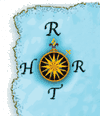 in
general education performed significantly better on 4 tasks.
In examining these 4 tasks it was interesting to note that
students had to respond to several components of graphs,
tables and maps in each of task. in
general education performed significantly better on 4 tasks.
In examining these 4 tasks it was interesting to note that
students had to respond to several components of graphs,
tables and maps in each of task.
|
| |
|
|
NGÄ
WERO
|
|
CHALLENGES |
Te
whakaaro nui ki ngä pümanawa, ki ngä möhiotanga
o ngä
tamariki.
Ko
ngä wero nui kei mua o ngä kura rïroa,
ko te hiki ake i ngä mätauranga a ngä kaiwhakaako,
e möhio ai rätou me pëhea te whakaputa
i ngä tamariki i
ö rätou ake taonga, pümanawa.
I tua atu, kia rite tonu ngä rauemi ka
ratonga, ki ngä hiahia o ngä
tamariki Mäori, e taea ai e rätou
te whanake ake ki ngä taumata whakaaro
teitei o roto o ngä marau katoa. He nui
ngä körero mö te wähi nui
ki te whakapiki ake i ngä möhiotanga
a ngä tamariki i roto i ngä
toi, ngä pütaiao me ngä pümanawa
pärongo.
Te
whakarite rauemi mö te rumaki Mäori
He nui ake ngä wero mö te taha Mäori.
Ahakoa kua pai ake te whakarato mai o ngä pümanawa
tangata me ngä
rauemi, he maha ngä wähanga käore
anö kapi.
Mënä e
hängai ana, e tötika ana
Kua äta kitea e NEMP he rahi ngä wähi
o te aroturuki mätauranga rumaki reo Mäori
hei whakapai ake.
•
Me whakakuhu ko ërä äkonga Mäori
rumaki reo anake kua kuraina përätia mö te
wä kaua i raro iho i te rima tau.
• Me äta titiro anö, me whakapai ake
anö
hoki, ko te märama me te pai o ngä ähuatanga
e pä ana ki te reo i roto i ngä tümahi.
• Me whakapai ake anö ko te kaupapa whakangungu
kaiwhakahaere kaiwhakaako.
• Me rahi ake ngä tümahi ka mahia mai,
he mea i mahia tahia mai i ngä kaiwhakaako rumaki
reo Mäori.
• Me whai i te tautoko a ngä kaiwhakaako
rumaki reo Mäori.
|
|
Capitalising
on Mäori children’s skills and experiences
The challenges for general education schools continue to
be in upskilling practitioners in recognising and capitalising
on the skills and experiences that Mäori children
bring to school, coupled with providing the resources and
programmes necessary to expose Mäori students to higher
order thinking skills in all areas of the curriculum. The
importance of increasing literacy levels in the arts, science
and information skills are well documented.
Provision
of resources for Mäori immersion
These challenges are compounded in Mäori immersion
programmes for a number of reasons. Though access to, and
availability of, human and material resources have improved
slightly, there is still a great need for improvement in
many areas.
Issues
of validity and reliability
NEMP has identified needed improvements for assessment
in Mäori immersion education.
•
Including only those students that have been in immersion
programmes for at least five years.
• Further refinement and clarity of linguistic
features in assessment tasks.
• Further development of the training programme
for teacher administrators.
• Increasing the number of tasks developed in
conjunction with immersion teachers.
• Securing additional support and involvement
of Mäori immersion educators.
|
| |
|
|
| NGÄ
HUARAHI KA WÄTEA |
 |
OPPORTUNITIES |
Me whakapakari
ake ko ngä kaupapa aroturuki, kia aronuitia ai te
wähi nui a te reo-ruatanga mö ngä äkonga
Mäori rumaki reo ia rä, ia rä, kia aha,
kia pai ake te kounga o ngä
körero ka whakaratoa e NEMP e pä ana ki ngä taumata
kei te pikia.
Ki te taea ngä tino tautoko mai a ngä kaiwhakaako
rumaki reo Mäori, ka titikaha te ngäkau mö te
whanaketanga o ngä kaupapa aroturuki e whakaata mai
ana i ngä hiahia mö ngä marau rumaki reo Mäori.
Mä tënei, e marama ake, e höhonu ake tërä ngä tätaritanga
ka kitea mö ngä ekenga taumata a ngä äkonga
Mäori rumaki reo. |
|
When
assessment activities are further strengthened to recognise
the dual language competency requirements of learners in
Mäori immersion programmes, they will add substantially
to the achievement information that NEMP can provide.
With the essential commitment and support of Mäori immersion
educators, confidence will grow in the development of assessment
activities that represent Mäori immersion curriculum
emphases. This would contribute to a richer analysis of the
achievements of students in Mäori immersion education. |
| |
|
|
| WHAKATAU |
 |
CONCLUSION |
He wähi
hou tënei te aroturuki i ngä mahi a ngä äkonga
Mäori rumaki reo. Iti noa ngä körero mö ngä
huarahi mahi pai rawa e tika ana i Aotearoa, me te mea anö,
ehara i te mea he ngäwari ngä wähanga o te
take nei. I runga i tërä, ko te mahi tuatahi a
NEMP i roto i te take nei, e hängai ana ki te whakahiato
me te rapu he aha ngä tikanga aroturuki e tika ana.
Ahakoa ngä tini putanga këtanga i roto i te tau,
ka noho ënei mahi hei papa mö ngä rä
kei te tü.
E mau pü ana te körero, ko NEMP kei mua e haere
ana i roto i te rangahau ko ëhea ngä huarahi mahi
tika, e taea ai ngä
körero e pä ana ki ngä taumata e ekea ana
e te Maöri i roto i ngä kaupapa mätauranga. |
|
Assessment
of the achievements of students in Mäori immersion
education is an emerging field of investigation. Little
information exists on best practice appropriate for New
Zealand, and essential considerations are not uncomplicated.
As a result, the first attempts of NEMP have been largely
concerned with developing and exploring suitable assessment
procedures. Although there have been significant difficulties
in this first year, it provides a valuable basis for future
work.
The forum recognises that the National Education Monitoring
Project leads the way in developing approaches intended to
provide detailed and helpful information on Mäori achievement
in education. |
|
 |
ISSN
1174-247X
|
|
 |
|
 |
|